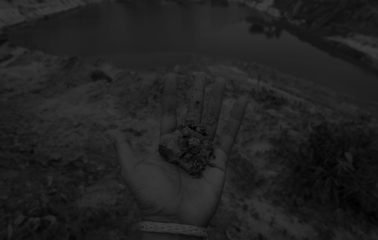Decree of MK 35 Tahun 2012 on test towards UU No. 41 Tahun 1999 about forestry has reveal the country’s abuses on claiming indigenous forests as country forests. Policies that had been run by the government are totally wrong and deny the constitution’s mandate. These unilateral policies cause a countless material and immaterial loss among people.
The Decree of MK supports indigenous people to rise up to seize back the spaces that have been owned by the country or corporate parties. This movement is re-echoing from remote villages to the national level. This victory has been long awaited by indigenous people.
Tenure Conflict
One thing that can’t be denied from this lame policies, tenure conflicts still continues to flourish over time. Tenure conflicts that involving indigenous people, government, and corporations have become a never-ending vicious cycle. While victims keep falling, no one knows when it comes to an end. According to the Konsorsium Pembaruan Agraria (KPA), during 2015, the number of tenure conflict is 252 cases, for 400,430 hectares and involving 108,714 families. From those various cases, 5 people had been killed, 39 shot by authorities, 124 wounded, and 278 detained (www. mongabay.co.id). It means that the conflict is still high.
West Sumatera has so much wide forest area throughout the province, nearly 55.38% of its area. It means that West Sumatera’s forest area is still very wide. But it certainly can’t be denied that the wide forest area is still getting so many issues, especially the tenure conflict (control and management) of forest area.
West Sumatera’s forest area has so much complex issues. Of all district and cities that have forest area are having the tenure issues. The problem is often related to the unclear boundaries of forest area and business license of companies with communal lands. The overlapping business license such as wood compression, mining, and plantation have worsened the condition.
From Qbar Association archives, during 2015, there were 59 cases of natural resources among 7,623 Ha in West Sumatera. While in KPK archives, there are 29 License of Mining Business (IUP) that overlap, mainly with the forest area. This condition needs to be concerned of and it is possible that those cases will be increasing in the future.
Indigenous Forest as a Solution
To overcome the issue of tenure conflict that is often happened primarily related to forest area control among people, country, and corporations; so that indigenous forest can be the best solution offered. Moreover, West Sumatera is identical with the customary law of Minangkabau tribes who hold customary rights tightly.
In Minangkabau customary law, forest area is village’s wealth that is divided into people’s area and tribe’s area. It means that according to the Minangkabau customary law, there is not even an inch of the area that is not possessed. Everything is arranged where it belongs to accordance with customary law. By implying the indigenous forest law, forest area control and management is fully given to indigenous people. The country’s role provides direction and guidance to the people in managing lasting and sustainable forest.
As a form of learning, Qbar Association is currently encouraging the recognition of indigenous forest of indigenous people of Malalo Tigo Jurai, Kab. Tanah Datar. This idea comes because indigenous people Malalo Tigo Jurai had been conflict with the government for decades over control of forest area. Starting from the 1980s during the enactment of Tata Guna Hutan Kesepakatan (TGHK) up to the present time, the local people always deny and resist to Badan Planologi Kehutanan (BPKH) in conducting the boundary of the forest area. Malalo Tigo Jurai people insist that the forest area in their territory as their indigenous forest and deny the existence of the country forest.
To determine legally indigenous forest, what has to be done is creating Local Regulation/ Peraturan Daerah (Perda) about the recognition of indigenous people as well as the indigenous area that has been set out in a participatory map that is recognized by the boundaries demarcation. To make sure that recognition of people can be supported by Pasal 67 ayat 2 UU No. 41 Tahun 1999, it should meet some elements such as history (people still in the same community), a form of indigenous institutions, customary law, customary territories, and the people are still harvesting the forest.
From the research that has been conducted, indigenous people of Malalo Tigo Jurai has fulfilled the prerequisites to be set as a unity of indigenous law people in accordance to UU mandates that has been explained above. It would be very important for Local Government of Tanah Datar to considers whether executive or legislative should encourage Local Regulation Initiative for the recognition of customary law communities of Malalo Tigo Jurai. It is because until today there is no recognition regulation for this case.
Such a big hope to make an indigenous forest of Malalo Tigo Jurai as a pilot project in encouraging indigenous forest law in West Sumatera. It is because, until today, there has been no single regulation of indigenous forest law in West Sumatera while seeing this big influence on lasting and sustainable forest. Right now, forest management is based on Hutan Kemasyarakatan, Hutan Nagari, and Hutan Tanaman Rakyat scheme that can’t solve the real tenure conflict. They can only solve problems temporarily because forest area that is managed by people still owned by the government, yet the recognition of indigenous people ownership.
Furthermore, in the context of district Tanah Datar as Luhak Nan Tuo in Minangkabau tribe with strong customary value and community of indigenous law people, indigenous forest law become important to be sounded and recognized. It is because this law is a part of defending the sovereignty itself, mainly for customary rights. Hopefully.
Writer: Mora Dingin, Direktur Perkumpulan Qbar
Source: Qbar Padang



